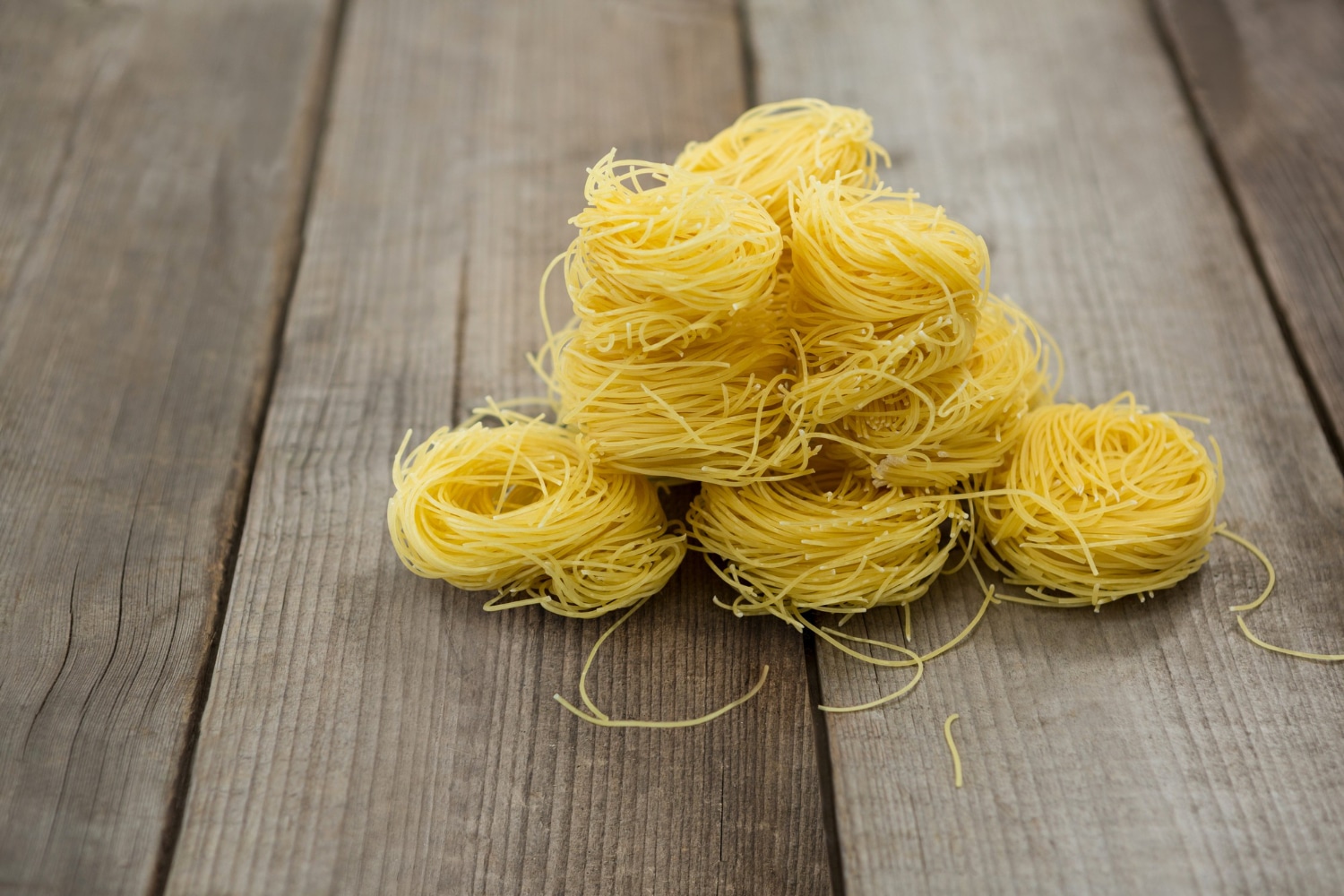With the sheer number of pasta variants globally (up to 300 if you count all the sub-variations), it can be a daunting task to remember all their names, much less how they should be prepared. It can also be tough to tell them apart, considering that many look like each other.
The flavor profiles of many pasta types are also similar, and the slight changes in how they are prepared or presented are often the core of why they differ from one another.
Two of the most similar types of pasta are capellini and spaghetti pasta. If you put these two pasta types side by side, they would look the same and even have almost identical flavor profiles.
The most significant difference between these two, if you look closely, is how they were made and extruded.
Capellini has a slightly thinner profile, so you have more delicate pasta. The size difference between the rods of spaghetti pasta and capellini may not seem like much, but as with anything Italian and pasta, there is the reason behind the difference.
Thinking About Spaghetti
Spaghetti is the most commonly sold pasta globally, and the ribbon-cut type is arguably the most popular in the US. The ribbon-type pasta defines US spaghetti, and many people can only imagine spaghetti with this variation. In Italian, this variation is called “little twine,” which is precisely what cooked spaghetti looks like.
Spaghetti is often served with simple sauces and oils. On top of the list of the most common sauces for spaghetti include the classic marinara sauce, olive oil, and for those who want something fresher and more herbaceous, there’s fresh pesto and the obligatory glass of wine.
There are also butter-based sauces that are excellent for many palates. Regular spaghetti pasta has medium-density rods, which require it to be cooked al dente to get the best experience cooking with this pasta type.
The goal is to cook the rods to a temperature that will make them tender but still firm. The firmness adds texture and enjoyment to the meal. The bite is vital in making great spaghetti. The medium-density noodles also require adding more sauce to the batch because a good bowl of spaghetti always has a great dollop of spaghetti sauce, whatever that sauce maybe.
How Spaghetti is Prepared
Anyone can make a great batch of spaghetti at home, and it doesn’t matter how much skill you already have in the kitchen. As long as you understand why you have to perform specific steps, you can do it! The first step is to prepare a big pot of water. When the water starts boiling, drizzle the surface with some olive oil and just a pinch of salt (the slightest pinch you can manage).
Wait for a rolling boil before dropping the pasta rods into the water. Stir the spaghetti rods as the water softens them. You should see the rods forming a neat column in the water as the heats begin to soften and tenderize the pasta.
After eight minutes, carefully take just one pasta rod from the batch and give it a bite. The pasta should already be well-cooked at this point, but still with a great taste. The ideal spaghetti is always firm to bite but never undercooked. If the pasta rods have attained an al dente state, it’s time to get your oven mitts and drain the rods with your colander. Be careful with the steam.
Thinking About Capellini
Capellini sounds very fancy, which makes it seem less accessible to first-time cooks. It’s just a name, and anyone can make good pasta, remember that. Capellini is what we call angel hair pasta.
Angel hair pasta rods are certainly slimmer, and you have to be careful when cooking this type of pasta because they have a more significant tendency to become stuck to each other when they are overcooked.
You already know how to test for al dente with cooking spaghetti rods, so it should be easy for you to cook capellini as well.
How Capellini is Prepared
The cooking process of capellini is essentially identical to cooking spaghetti, with a minor difference in how much cooking time is needed for angel hair pasta.
When the rolling boil is achieved in the pot, carefully drop the pasta and stir slowly after adding some olive oil and salt to the water. Angel hair pasta breaks quickly, so consider the rods fragile. We don’t want to break the rods. The total cooking time required for preparing the perfect batch of capellini is just four minutes (not eight minutes). Do not cover the pot when cooking capellini; allow the steam to dissipate. Locking in the moisture can cause the rods to become overcooked. As we have discussed earlier, overcooking the rods will result in a sticky mess, making your pasta essential inedible.
Test the rods after four minutes if they are al dente. Once the rods are cooked, you can take them out of the heat and rinse them with cold water. Unlike regular spaghetti pasta, capellini can still become an overcooked mess after taking the batch out of the heat because the rods are thinner. The extra heat will continue cooking the rods, so make sure you have cold water ready.
What’s unique about capellini is it is often chosen in recipes that involve seafood.
While the regular spaghetti rods are fine, there is something about the thinner rods that make capellini so much more effective in preparing seafood pasta. If you need a boost of confidence when making seafood pasta, selecting the right pasta is your ticket to the big culinary leagues. Who knows? You might end up with a great pasta recipe that matches the texture and flavor of recipes served in authentic Italian restaurants.

